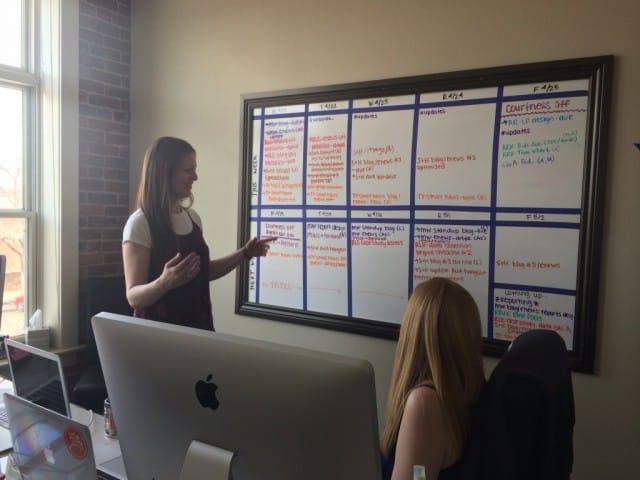Remote teams are the way of the future, with more and more companies going this route to ensure they can retain the best talent and become more operationally efficient. It also doesn’t hurt that companies are making this move at a time when traffic worsens in most metropolitan areas and office space, particularly on the east and west coasts, grows pricier by the quarter.
But don’t be deceived!
The real reason even Fortune 500 companies are willing to make this leap is it makes good business sense, which is a well-documented fact buttressed by research from a number of respected sources, among them MIT’s Sloan School of Business and the computer network juggernaut Cisco Systems.
In a 2009 survey of some 2,000 employees, Cisco found that more than two-thirds of the employees reported higher productivity when working remote, and fully three-quarters of the workers said the timeliness of their work improved.
Is anyone really surprised?
Colocated teams spend hours each day in meetings. There are a veritable smorgasbord of interruptions and distractions and result in a huge drag to the bottom line – owing to the added costs of office and meeting space, additional layers of management and commuting costs (many executives have travel expenses covered as part of their overall compensation package).
I’m on the record as someone who hates offices. The meetings, the interruptions and the petty office politics add up to big time zaps, but those are no longer my biggest problems with offices.
The over-reliance on tools, over in-person communication, is the real culprit eating away at colocated teams.
When Melissa Fach wrote about her favorite communication tool, FlowDock, for working with the AuthorityLabs team (she heads social media for the platform) it was not by accident that she stressed the tool is used for “stay[ing] in touch,” and not used as a substitute for overall communication. The AuthoritiesLab team actually does talk during the day, holding at least one Google Hangout every day at the same time.
This sort of interaction, where tools support real, meaningful interaction, marries the best of colocated teams (e.g., meaningful in-person communication) with the best of remote teams (e.g., efficient real-time collaboration).
Efficient?
From what I’ve seen, this approach breeds efficiency, but even more important, it fosters a cohesive work environment that’s tough to beat. Folks are able to do the work they love, and in turn they come to appreciate the company and their teammates even more.
I’m surprised more companies aren’t using such an approach. Instead, what I see are colocated teams so burnt out from meetings and office politics that they rely only upon tools to communicate. Their work, and the work they do for clients, suffers.
Don’t allow your colocated team to become a disillusioned, disconnected bunch. Steal ideas from remote teams to drive efficiency, foster collaboration and promote a team-building culture.
- Don’t replace people with platforms. Tools are meant to make it easier for team members to share ideas; they should not be used in place of genuine interaction. At too many colocated workplaces, computer screens are littered with Gchat and other messaging software, which is ridiculous when you consider the inefficiency it promotes, not to mention how much easier it is communicate in person. In reality, something more nefarious at work here: workers are choosing to communicate in-person only with those co-workers they have to talk to; otherwise, it’s platforms over people. Make it clear to your team that tools are not a substitute for in-person communication. Drive home the point by asking that collocated team members have at least one quick, in-person talk each day with those parties they are working on projects with. (This could be a manager-to-manager interaction.)
- Hold standing meetings, and keep rigid time schedules. Nothing you or anyone at your company has to share is so important that, every single day, you need to meet for hours and hours. A smarter approach is to (a) set a specific, defined agenda for each meeting, (b) email the agenda to each them member (c) make them aware that only what’s entailed in the agenda will be covered during the meeting and (d) make 90% of your meetings standing-only gatherings, which places added emphasis on efficiency. From there, set a rigid time limit that’s strictly enforced.

- Pick up the phone. The office phone is now largely a dinosaur in many offices, used only for calls from pesky vendors and salespeople. Have your managers instruct staff to, at least once per day, reach out to a telecommuting worker or a staff member who’s working at another office for a brief, impromptu chat about something he or she is working on. This ensures team members are familiar with what others in similar roles throughout the company are working on and, most important, promotes the sharing of ideas. What’s more, it can create a open door for ideation, which is vital when team members are a wit’s end on a project and need a fresh set of eyes.
Having all team members working remote is a Pollyannaish notion. However, collocated teams can stand to benefit greatly by adopting some tactics being used by remote teams. If not else, all companies must come to realize that tools are no substitute for genuine interaction.
Care to share some ideas your colocated team has borrowed from remote workplaces?


